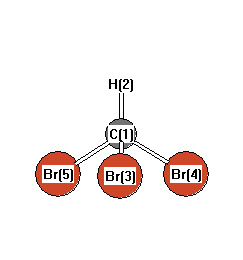.
| squib |
reference |
DOI |
| 1952Wil/Cox:1524 |
Q Williams, JT Cox, W Gordy "MOLECULAR STRUCTURE OF BROMOFORM" J. Chem. Phys. 20(10) 1524-1525, 1952 |
10.1063/1.1700208 |
| 1987Kuchitsu(II/15) |
Kuchitsu (ed.), Landolt-Bornstein: Group II: Atomic and Molecular Physics Volume 15: Structure Data of Free Polyatomic Molecules. Springer-Verlag, Berlin, 1987. |
|
| 1998Gus/Rui:163 |
M Gussoni, R Rui, G Zerbi "Electronic and relaxation contribution to linear molecular polarizability. An analysis of the experimental values" J. Mol. Struct. 447 (1998) 163-215 |
10.1016/S0022-2860(97)00292-5 |
| 2008Shu/Zha:10533-10538 |
NS Shuman, LY Zhao, M Boles, T Baer, B Sztaray "Heats of Formation of HCCl3, HCCl2Br, HCClBr2, HCBr3, and Their Fragment Ions Studied by Threshold Photoelectron Photoion Coincidence" J. Phys. Chem. A 2008, 112, 10533–10538 |
10.1021/jp8056459 |
| Gurvich |
Gurvich, L.V.; Veyts, I. V.; Alcock, C. B., Thermodynamic Properties of Individual Substances, Fouth Edition, Hemisphere Pub. Co., New York, 1989 |
|
| NSRDS-NBS10 |
R. D. Nelson Jr., D. R. Lide, A. A. Maryott "Selected Values of electric dipole moments for molecules in the gas phase" NSRDS-NBS10, 1967 |
10.6028/NBS.NSRDS.10 |
| webbook |
NIST Chemistry Webbook (http://webbook.nist.gov/chemistry) |
10.18434/T4D303 |












